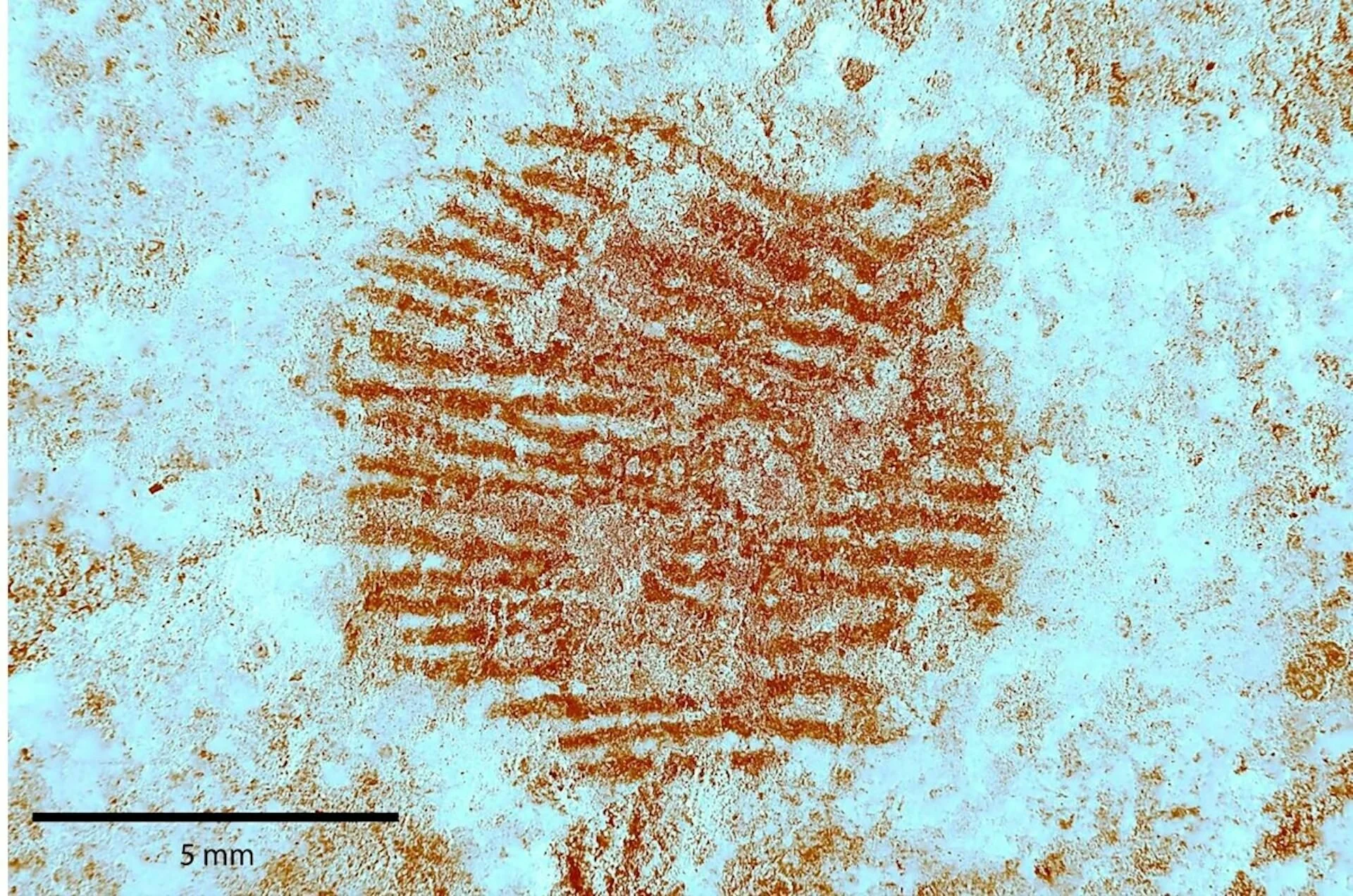A remarkable archaeological discovery in Spain has uncovered the oldest known human fingerprint—left not in wet clay or soft soil, but pressed into pigment on a piece of Neanderthal artwork more than 42,000 years ago.
The object: a granite stone painted with a red ochre dot, intentionally placed to highlight the image of a human face. This is currently the oldest known example of portable art linked to a Neanderthal—and thanks to a smear of pigment, the most direct and personal evidence of symbolic behavior we've ever found from one.
An Ancient Portrait in Stone
The discovery was made at Abrigo de San Lázaro, an archaeological site near the Eresma River valley, just downstream from Segovia, Spain. The area is known for evidence of Neanderthal settlements, including Mousterian tools characteristic of their culture.
The stone itself likely came from the riverbed. Its natural indentations resemble eyes and a mouth—features that would’ve triggered pareidolia, the human tendency to see faces in random shapes. A red ochre dot was carefully applied where a nose would be, visually completing the face and suggesting the image was not just imagined—but symbolically enhanced.
This act of turning a found object into a piece of symbolic expression is a powerful insight into Neanderthal cognition. And it gets even more compelling.
The Fingerprint That Traveled Through Time
For over two years, a multidisciplinary team of archaeologists, geologists, and forensic experts studied the object. Using high-resolution 3D scanning, they confirmed the stone wasn’t used as a tool—ruling out practical use. Then, chemical analysis showed the red pigment was externally applied ochre, not a natural stain in the granite.
The breakthrough came through multispectral imaging, a method adapted from forensic science by the Spanish Scientific Police. It revealed a hidden fingerprint embedded in the pigment—left by the Neanderthal who painted the stone.
Forensic experts, including fingerprint specialists from Spain’s Central Identification Unit, analyzed the print in stunning detail. They concluded that it belonged to an adult human male—a Neanderthal—making it the oldest and most complete human fingerprint ever found.
Symbolism and Art Before Homo sapiens?
For decades, scientists believed symbolic thinking and art were unique to Homo sapiens. But discoveries like this continue to challenge that narrative.
The shift began with the 2018 publication in Science of symbolic cave paintings in three Spanish caves—Ardales, La Pasiega, and Maltravieso—dating to before modern humans arrived in Europe. The Neanderthals who created those paintings used patterns, lines, and shapes repeatedly, suggesting shared symbolic language and meaning.
Now, the Abrigo de San Lázaro stone takes this even further. It’s not only a representation of a human face—created by one of Europe’s last Neanderthals—but it also preserves the literal touch of its maker, a fingerprint pressed into history.
More Than a Mark
This discovery isn’t just about pigment and stone. It’s about cognition, identity, and the deep human desire to express, symbolize, and mark the world.
And in this case, that mark was quite literal.
Over 42,000 years ago, a Neanderthal saw a face in a stone, picked up a piece of ochre, and painted a red dot for a nose. He left behind more than just a piece of art—he left himself.
Now, thousands of years later, forensic scientists—using techniques once meant for solving modern crimes—have traced that ancient gesture back to its source.
Because it turns out, even Neanderthals couldn’t escape leaving fingerprints.







